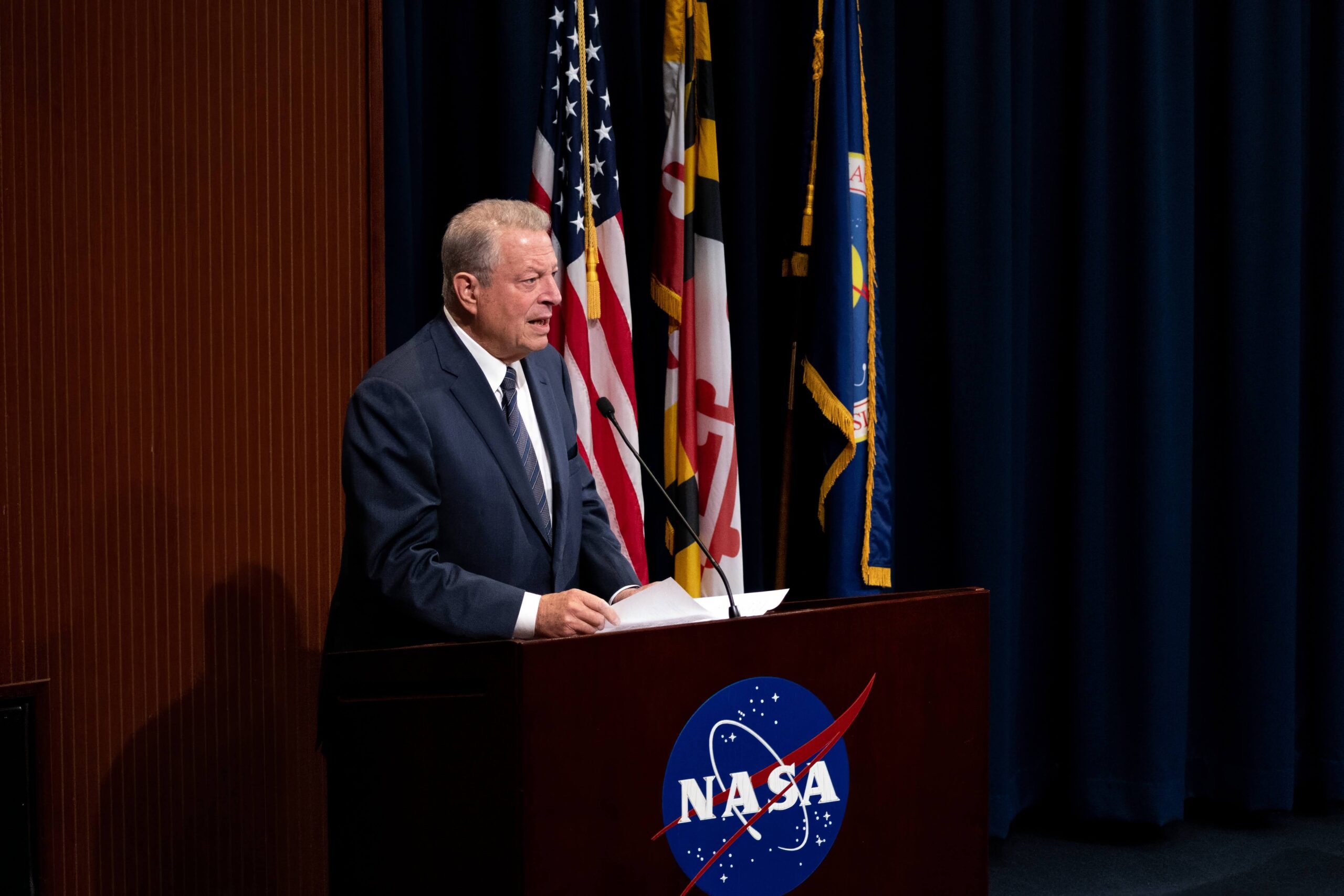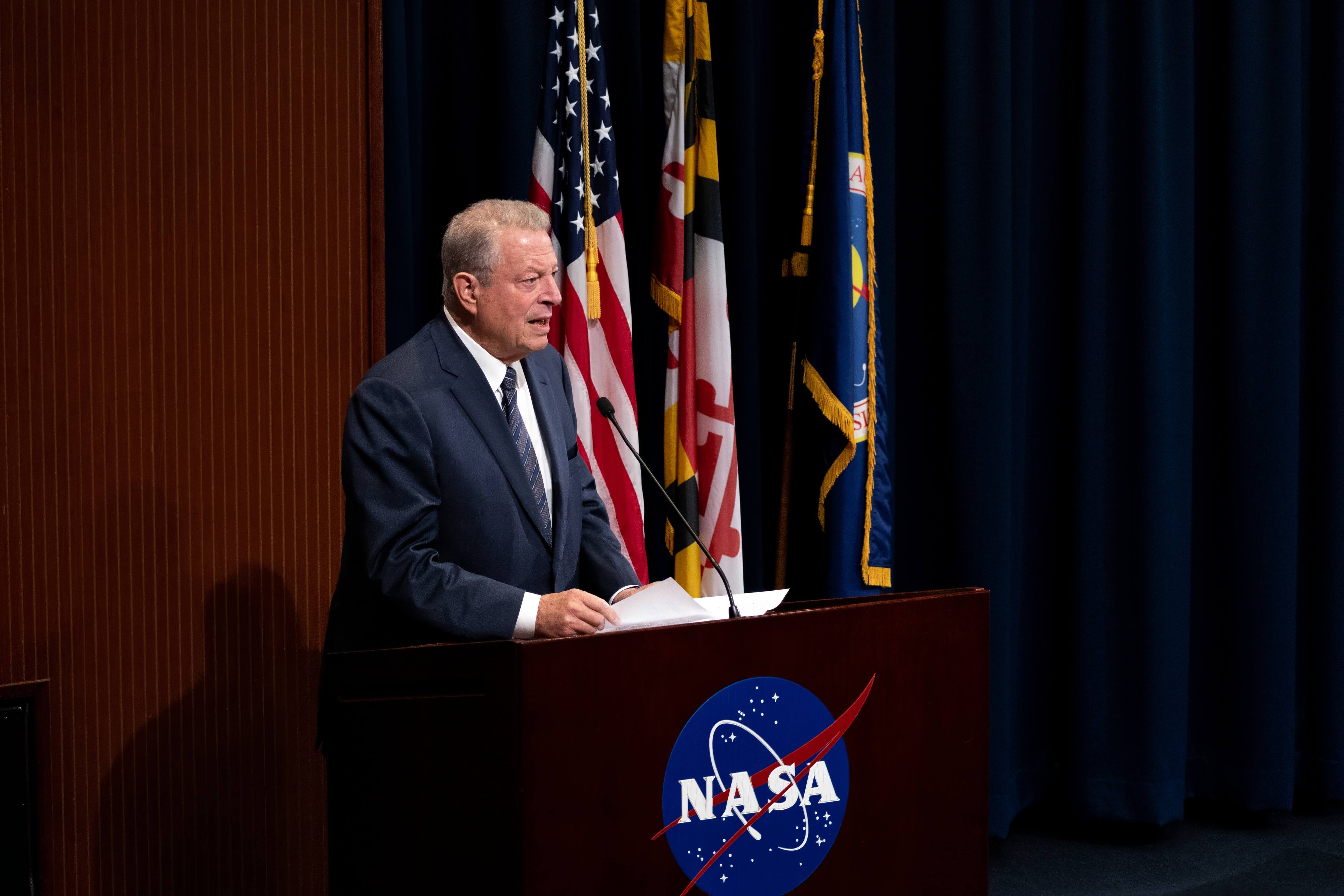Environmentalist and former Vice President Al Gore visited NASA’s Goddard Space Flight Center in Greenbelt, Maryland, on Oct. 16, 2024, to commemorate the upcoming 10th anniversary of the DSCOVR (Deep Space Climate Observatory) mission.
“The image of our Earth from space is the single most compelling iconic image that any of us have ever seen,” Gore said at a panel discussion for employees. “Now we have, thanks to DSCOVR, 50,000 ‘Blue Marble’ photographs … To date there are more than 100 peer-reviewed scientific publications that are based on the unique science gathered at the L1 point by DSCOVR. For all of the scientists who are here and those on the teams that are represented here, I want to say congratulations and thank you.”
 To commemorate the upcoming 10th anniversary of the DSCOVR (Deep Space Climate Observatory) mission, NASA’s Goddard Space Flight Center in Greenbelt, Md., hosted environmentalist and former Vice President Al Gore, shown here addressing a crowd in the Building 3 Harry J. Goett Auditorium, on Oct. 16, 2024.NASA/Travis Wohlrab
To commemorate the upcoming 10th anniversary of the DSCOVR (Deep Space Climate Observatory) mission, NASA’s Goddard Space Flight Center in Greenbelt, Md., hosted environmentalist and former Vice President Al Gore, shown here addressing a crowd in the Building 3 Harry J. Goett Auditorium, on Oct. 16, 2024.NASA/Travis Wohlrab 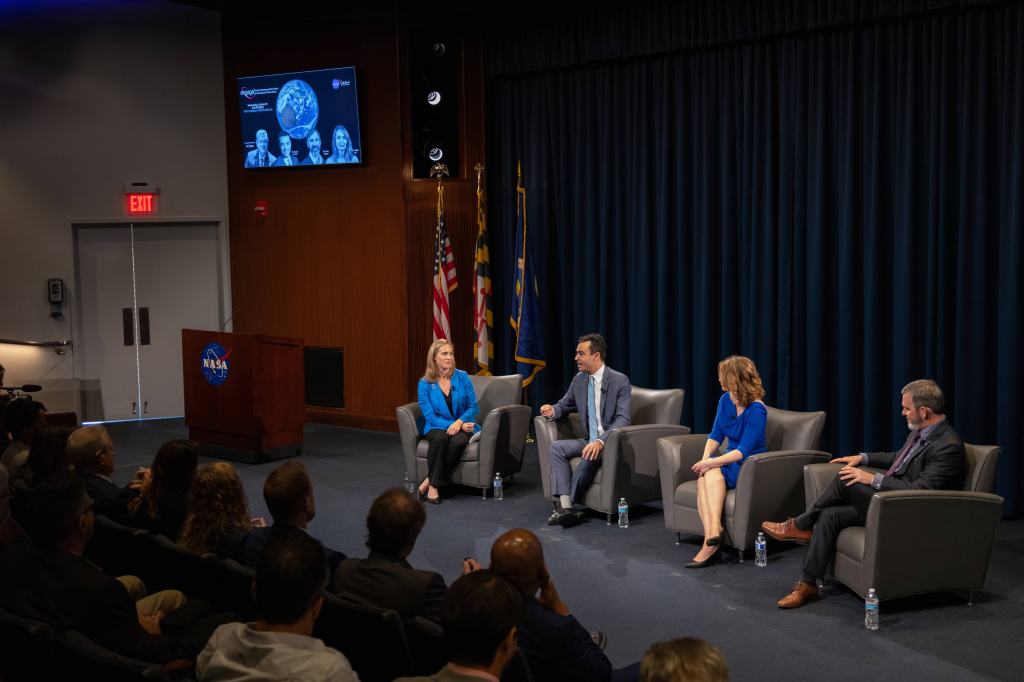 Following opening remarks from Gore, Goddard scientists participated in a panel discussion entitled “Remote Sensing and the Future of Earth Observations. From left to right: Dalia Kirschbaum, director, NASA Goddard Earth Sciences Division; Miguel Román, deputy director, atmospheres, NASA Goddard Earth Sciences Division; Lesley Ott, project scientist, U.S. Greenhouse Gas Center; John Bolten, chief, NASA Goddard Hydrological Sciences Laboratory.NASA/Travis Wohlrab
Following opening remarks from Gore, Goddard scientists participated in a panel discussion entitled “Remote Sensing and the Future of Earth Observations. From left to right: Dalia Kirschbaum, director, NASA Goddard Earth Sciences Division; Miguel Román, deputy director, atmospheres, NASA Goddard Earth Sciences Division; Lesley Ott, project scientist, U.S. Greenhouse Gas Center; John Bolten, chief, NASA Goddard Hydrological Sciences Laboratory.NASA/Travis Wohlrab 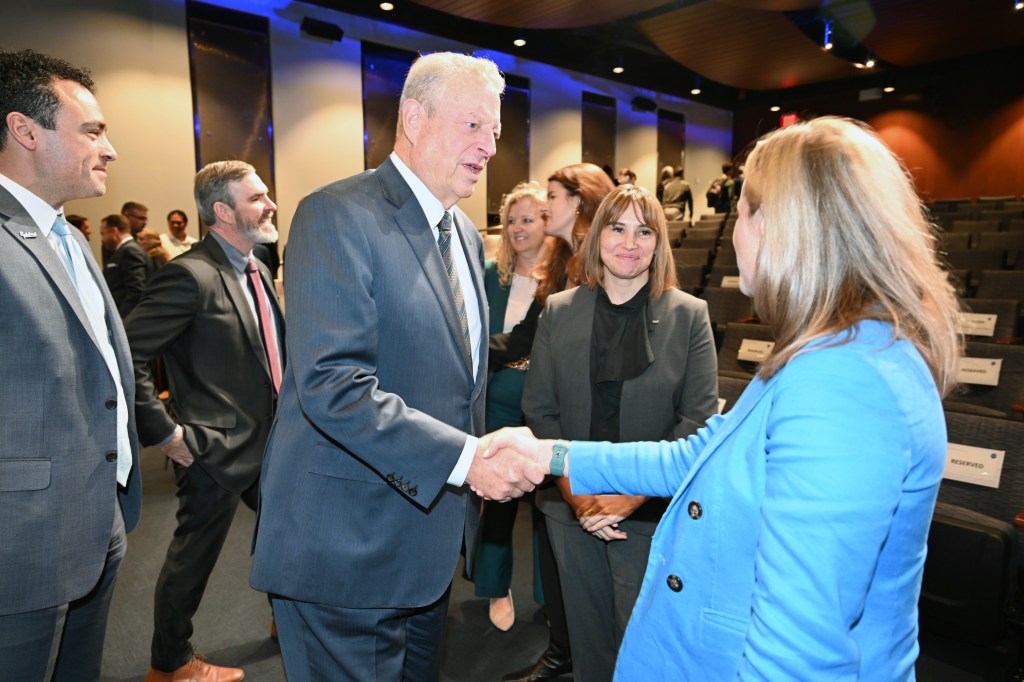 Gore shakes hands with Kirschbaum following the panel discussion. Goddard Center Director Makenzie Lystrup stands between the two.NASA/Katy Comber
Gore shakes hands with Kirschbaum following the panel discussion. Goddard Center Director Makenzie Lystrup stands between the two.NASA/Katy Comber 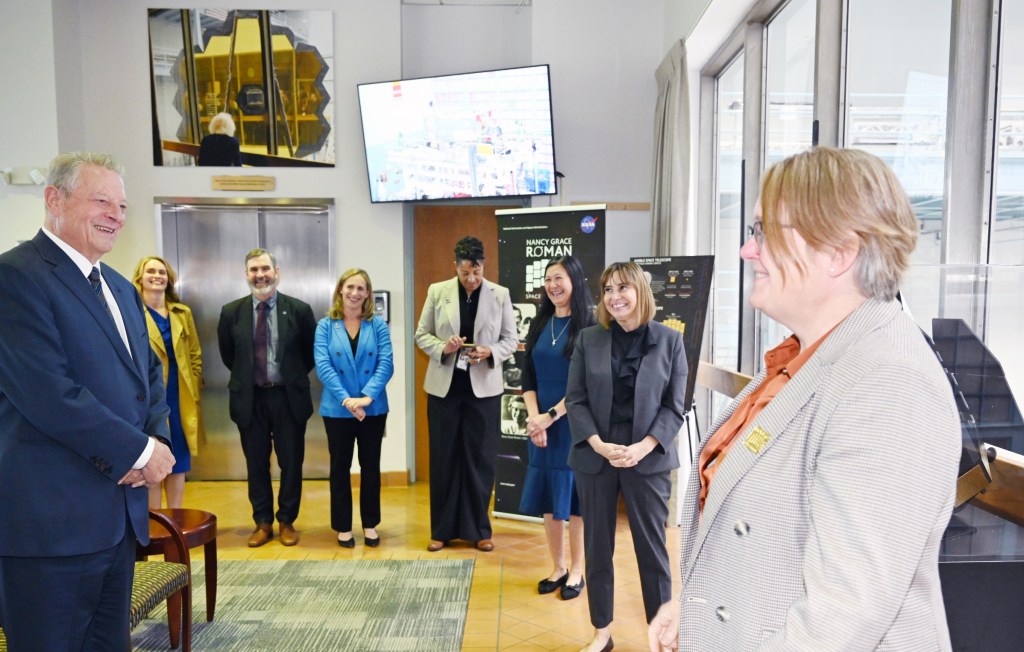 Gore visits the overlook for the NASA Goddard clean room where the Roman Space Telescope is being assembled. Julie McEnery, Roman senior project scientist, stands at right.NASA/Katy Comber
Gore visits the overlook for the NASA Goddard clean room where the Roman Space Telescope is being assembled. Julie McEnery, Roman senior project scientist, stands at right.NASA/Katy Comber 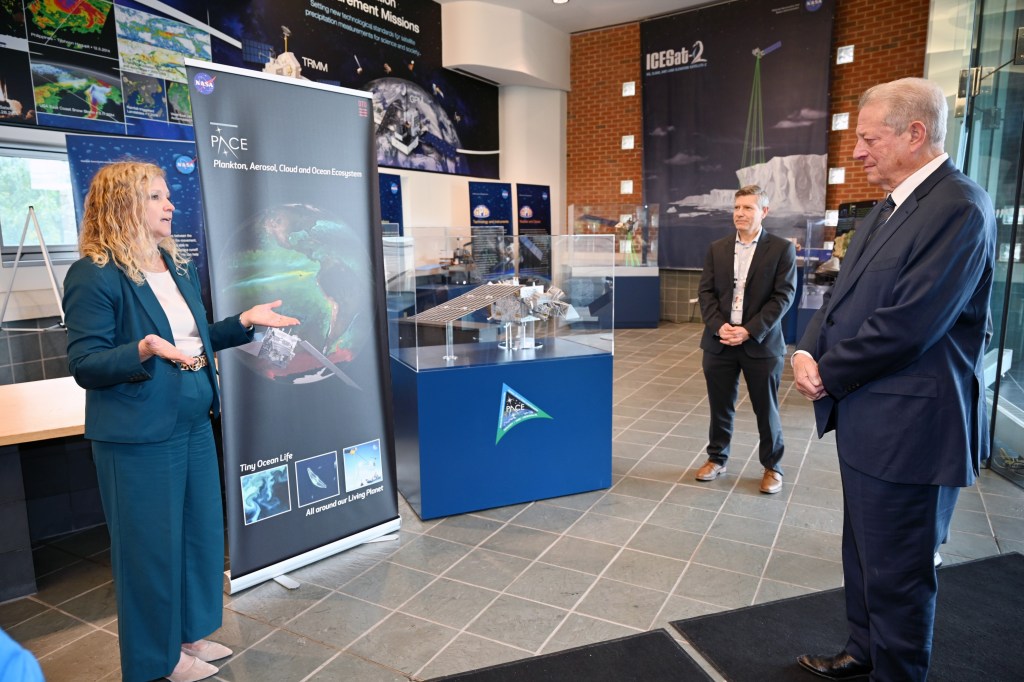 Christa Peters-Lidard, NASA Goddard’s Sciences and Exploration Directorate director (left), speaks with Gore in the lobby of Building 32, where the former vice president viewed the control room of NASA’s Plankton, Aerosol, Cloud, ocean Ecosystem (PACE) mission.NASA/Katy Comber Following Gore’s talk on climate monitoring, Goddard scientists participated in a panel discussion, “Remote Sensing and the Future of Earth Observations,” which explored the latest advancements in technology that allow for the monitoring of the atmosphere from space and showcased how Goddard’s research drives the future of Earth science.
Christa Peters-Lidard, NASA Goddard’s Sciences and Exploration Directorate director (left), speaks with Gore in the lobby of Building 32, where the former vice president viewed the control room of NASA’s Plankton, Aerosol, Cloud, ocean Ecosystem (PACE) mission.NASA/Katy Comber Following Gore’s talk on climate monitoring, Goddard scientists participated in a panel discussion, “Remote Sensing and the Future of Earth Observations,” which explored the latest advancements in technology that allow for the monitoring of the atmosphere from space and showcased how Goddard’s research drives the future of Earth science.
Gore’s visit also entailed a meeting with the DSCOVR science team, a view into the clean room where Goddard is assembling the Roman Space Telescope, and a stop at the control center for PACE: NASA’s Plankton, Aerosol, Cloud, ocean Ecosystem mission.
Launched Feb. 11, 2015, DSCOVR is a space weather station that monitors changes in the solar wind, providing space weather alerts and forecasts for geomagnetic storms that could disrupt power grids, satellites, telecommunications, aviation and GPS.
DSCOVR is a joint mission among NASA, the National Oceanic and Atmospheric Administration (NOAA), and the U.S. Air Force. The project originally was called Triana, a mission conceived of by Gore in 1998 during his vice presidency.

